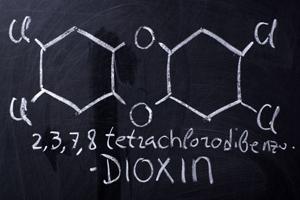EPA Science Matters Newsletter: EPA Dioxin Science Continues to Have Impact

Published October 2014
Agency’s “Team Dioxin” lauded for completing long-anticipated health assessment
On May 8, 2013, EPA’s “Team Dioxin” was awarded the Federal Service Excellence Project Team Award in recognition of completing the non-cancer health assessment for dioxins.
“There was a vast amount of literature on dioxin,” says Glenn Rice, an EPA environmental health scientist who led the team. “In addition, there were a lot of challenges with understanding how dioxin passes through the body, how it accumulates in different tissues, and how long it persists following an oral exposure.”
Rice and his team conducted a massive literature search about human toxicology, biology, epidemiology, and chemistry, and reviewed more than 1,000 studies looking at how both high and low levels of dioxin exposure might impact human health.
All of that work was performed under the watchful eye of a host of partners and stakeholders eagerly anticipating the assessment’s findings. Interested groups included the public health community, private industries, local communities, and members of the U.S. Congress. Former EPA Administrator Lisa P. Jackson personally made the timely completion of the assessment a major priority.
“In order to meet an aggressive schedule outlined by Administrator Jackson, the team sacrificed time with family because they understood the significance of their work to the American people,” explains Annette Gatchett, Director of the Cincinnati Division of EPA’s National Center for Environmental Assessment, where the dioxin team is headquartered.
The team delivered. The completed assessment provides much needed information on the potential noncancer health effects resulting from exposure to dioxin and, for the first time, an estimate of the amount of dioxin that one can ingest daily over a lifetime that is not likely to cause harmful health effects (the “oral reference dose”).
“It was really intense throughout,” Rice says. “Dioxin is a very visible chemical and people were very interested in the decision and analysis.”
In addition to Rice, the team included Hisham El-Masri, Belinda Hawkins, Jeffrey Swartout, Linda Teuschler, Scott Wesselkamper, Michael Wright and Bette Zwayer.
